Commuters caught in traffic on Pearse Street in Dublin’s south inner-city may sometimes gaze at the elegant, flower-bedecked façade of a distinctive, Victorian red-brick building and wonder what goes on in there.
An amazing amount is the answer.
Some 200 staff and many more volunteers work out of St Andrew’s Resource Centre providing services “from the cradle to the grave” to the local community.
It spans not only a lifetime but also increasing diversity, from inner-city families whose livelihood for generations depended on traditional manual labour to non-national professionals coming in for high-tech jobs in those same docklands. But no one category of family is immune to vulnerability.
Dara Terry, the family support manager who works as the link between Tusla (the Child and Family Agency) and St Andrew's, sees the centre as "a scaffolding" around families – "they may be very highly supported, or it may be there just in case they fall".
St Andrew's is one of 109 Family Resource Centres (FRCs) around the country that receive core funding from Tusla. A further 11 are to be developed with €1.76 million allocated by the Department of Children and Youth Affairs to Tusla, as part of Budget 2018.
Every centre is different because each responds to local needs. As one of the first 10 centres to receive funding in 1994 – under what was then a Family Support Agency initiative – St Andrew's is a flagship of the FRC network. It dates back to 1973, when it started as a social services centre in premises on Westland Row provided by Trinity College.
The local community was pretty homogenous and the issues were housing and jobs, says the centre’s chairman, Dermot McCarthy. The big campaign in the 1970s was to get houses built. “Now the issue is housing again but a different kind” – how can local families stay in the area with “gentrification” pushing up rents?
McCarthy has been involved with the centre since his days as an economics student in Trinity, where he volunteered for St Vincent de Paul. While the area has changed dramatically, in many ways for the better he says, not everyone has kept up and employment is still a challenge.
“There are plenty of jobs on the doorstep, but they are not necessarily jobs that people are either equipped for, or aspire to. But we have made a lot of progress both on the education side with youngsters and with their aspirations, which are critical, and also adaptations for adults.”
The strength of this centre, says Eifion Williams of Tusla, is that it is very focused on the community. “I think it is really important that State agencies are aligned to what’s happening locally, you can get removed,” he says. “Tusla sees all the FRCs as that – plugged straight into the community.”
The network suffered a 45% cutback in funding during the recession
Tusla’s funding only covers core costs– €187,000 a year in the case of St Andrew’s, which deals with eight agencies for its €3.5 million annual budget. The core funding helps lever other resources, says McCarthy.
The FRC network suffered a 45 per cent cutback in funding during the recession, which is why, in the wake of the Budget 2018 announcement, the union representing FRC staff argues that existing centres need to be financed adequately before they start opening new ones.
“They’re State-funded, but have to go out to fund-raise to keep the lights on,” says Darragh O’Connor of SIPTU, pointing out that FRC core staff have not had a pay rise for 10 years.
St Andrew's is a far larger operation than the average FRC. Manager John Fitzsimons, who started working here in 1985 as one of three staff on a community employment programme, grew up around the corner on Macken Street. One of his abiding childhood memories is the smells – from the Gas Company, Bolands Bakery and the local abattoir.
What does he smell today?
“Car fumes – that has replaced everything.”
So next time you're stuck in a traffic jam on Pearse Street, imagine the building like a Richard Scarry illustration from his "Busytown" books, and here is a glimpse during a Thursday visit of what's going on in there.
Childcare
Staff turnover isn’t a problem at the childcare centre that was added on at one end of the building in 1996. Among the 12 permanent staff, nobody has worked here for less than 12 years, says support manager Moira Hogan.
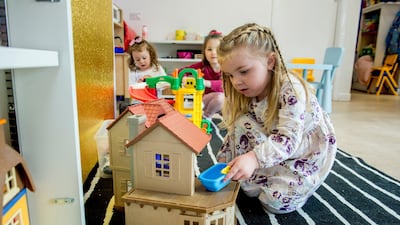
Open from 8.30am to 5.45pm, there’s a good-sized outdoor area for the 52 children aged two to nine who come here for half day, full day or after-school care. Many of them live in apartments, with limited opportunities to play outdoors.
A new “mud kitchen” is a big hit. A couple of girls grin happily, with dirt up to their elbows, as they get stuck in.
In a room for two- to three-year-olds, a list on the wall translating Turkish words into English is a reminder of the different ethnic backgrounds. Staff ask parents to give them some of the words they most commonly use at home with their children to help with communication.
Talk About Youth service
Kacper Jaroszynski (16) was “amazed” when he heard about St Andrew’s, after youth worker Lisa Downes visited his school, CBS Westland Row. With all the things going on, “you get the chance to develop yourself”, he says.
Having moved to Dublin from a small town in central Poland, he has started attending an art programme and is one of a group that have produced posters on the theme “fake news” that they hope will be displayed at a conference in Prague.
Róisín Cork (14) reckons she has been coming here since she was four. As well as being in the art group, she is a long-time member of the majorettes, the Dazzellettes, who practise here once or twice a week.
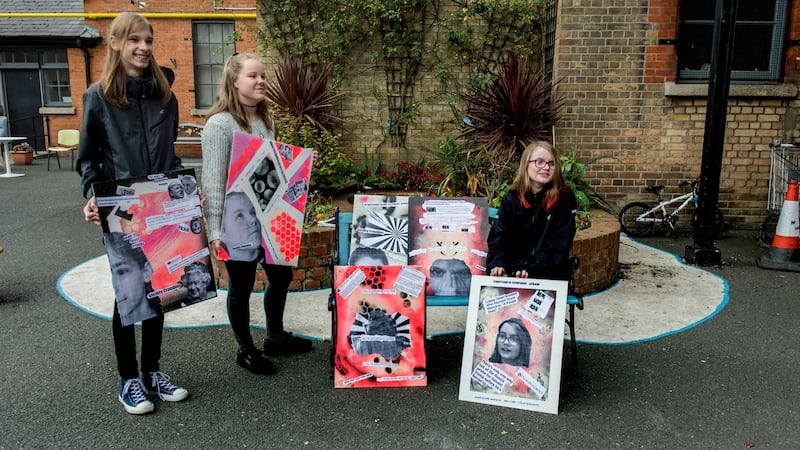
“It gives us a voice; people assume we are stupid,” she says. “Here we are allowed to speak our mind and adults help us to be heard.”
About 400 young people aged 10 to 24 are involved in various youth activities, with a focus on critical thinking, explains Downes. Some of them get a chance to travel abroad – 130 went on exchanges to Finland, Denmark, London and Liverpool last year.
The Junction
A former shop on the corner of Pearse Street and Macken Street has been taken over as an extra space. On Thursdays, it is used as a food bank.
Stacked up against one wall are boxes of dried soup, cereal, pasta, porridge, rice, coffee, tea and sugar – staples from the EU Food Programme. On the other side are deliveries by FoodCloud, a social enterprise that redistributes surplus stock that today includes rooster potatoes, fresh tomatoes and two types of biscuits.
Volunteers are packing 25 bags to go to a centre in Rialto, but the rest of the food is for local families who call in from 1.30pm to 3.30pm. About 90 per cent are referred by the St Vincent de Paul (SVP), but nobody is turned away.
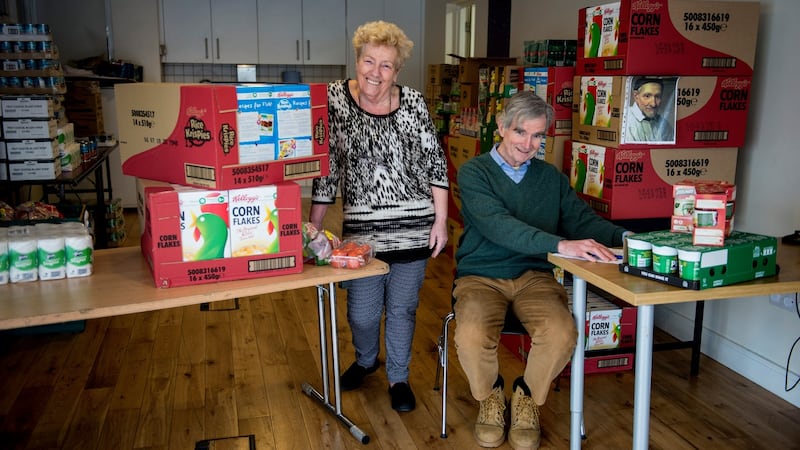
“Nobody comes to a food bank unless they have to,” says volunteer Brian O’Malley, who is president of SVP’s Dublin South East branch. On the day we talk, this food bank has been operating for 10 weeks and given food to 1,003 people – including 445 children – spread out in 281 households.
Employment services
With huge State investment going into the construction resurgence in the area, if local people can’t get work out of it “nobody’s winning – except the developers and the go-getters”, says Jim Hargis, employment services co-ordinator at the centre.
He works for Eastside and Docklands Local Employment Service, which seeks to exploit construction opportunities for long-term unemployed men, such as father-of-two Thomas Grimes (47) from Ferryman’s Crossing.
Last September, it set up a three-week construction-skills course, run on a site provided by Dublin Port, that gives labourers the certified training they need now to get work.
Grimes did the course and got a full-time job afterwards, at the Capital One Dock development on the top of Sir John Rogerson’s Quay. The course has a 70 per cent success rate in getting work for participants, the longest of whom had been unemployed for 10 years.
In 2016, the employment services here placed 266 people in jobs, supported 46 more in setting up their own enterprise and helped 299 to undertake training or further education.
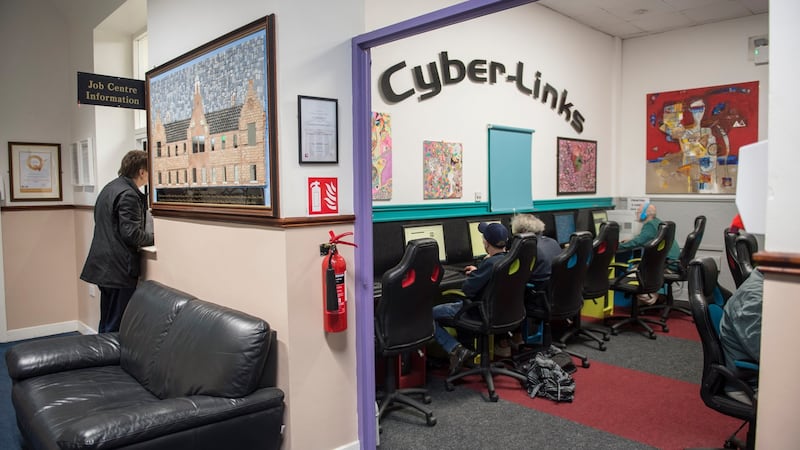
Meanwhile, there are 80 people on the centre’s community employment (CE) scheme. Either working on the premises or seconded to one of 23 groups in the area, they are paid €215.50 for 19½ hours a week.
“It is to get people back into employment – they have to have been receiving benefit for a year to come on board,” says manager Aileen Murray. “Part of the contract of coming in is that they participate in training, that enables them to go back to work.”
It is very successful for people who are driven and want to change direction, she says. But, at this time of high employment, participants are predominantly older men needing high levels of support.
It is impossible to retrain a dock worker of a certain age for more academic jobs in the IFSC and the technology companies, she says. Unfortunately, the ending of dual State payments stopped young single parents coming in for retraining because it wouldn’t be worth their while once they had paid for childcare.
Seniors’ day care
“Beautiful legs, 11; last of the teenagers, 19 . . .” There is an air of intense concentration in the seniors’ day-care centre, with 24 heads bowed over their cards for an afternoon session of bingo.
Earlier today, this group of women were bussed out to the Omni Centre in Santry for shopping before returning for a three-course lunch of vegetable soup, cabbage and bacon, and semolina.
About 14 men join the women for lunch, but they are not so keen on the organised activities, says Elaine Boland, manager of the day-care centre and home-care services.
“They just want to be fed and warm, but they sit and have a chat and that is enough of a social activity for them.”
There’s a washing machine and dryer at the back where staff will do laundry for those living alone with no washing facilities.
Open five days a week, the day-care centre caters for 45 seniors aged 62 to 90. Apart from one homeless Greek man, who was delighted to win €10 on the bingo last week, this generation are the last vestiges of the homogenous community.
Some 39 staff also provide home help, and in some cases home care, in about 97 homes, most of whom have been referred to them by the primary care team.
There is nobody else on this planet for them
“The idea is to keep them in their homes and to keep them independent,” says Boland. Staff will assist some, who may have returned to the area after working across the water but have no surviving relative, with matters such as hospital visits. “There is nobody else on this planet for them,” she adds.
Horticultural project
The containers of flowers that prettify both the centre’s façade and internal courtyards, originate in the horticultural project behind the seniors’ day-care centre. The five-strong team that is here this morning also work in a garden on Bath Avenue, and on other projects such as one funded by the Beggars Bush Business Forum to provide hanging baskets in that area.
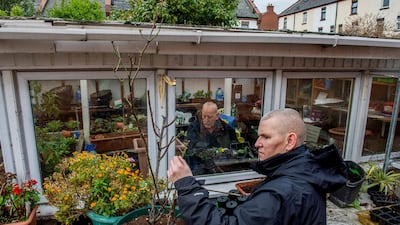
“They’re learning all aspects of horticulture, doing courses and a lot of them pursue that career. For others, it’s a place where they can come and they like gardening,” says Fitzsimons.
Welfare rights office
“It can be a little bit from a needle to an anchor,” says Geraldine O’Brien about what comes her way as welfare rights officer. “People can come in about bees in their house – it’s a multitude of stuff.”
But most of her work entails helping with social welfare entitlements, filling out forms, perhaps writing to Dublin City Council about housing and making phone calls on their behalf, be they about rent arrears, other money problems or looking for free legal aid.
“Sometimes, people are coming in to tell you all their problems,” says O’Brien, who is a trained counsellor, but tries to keep the focus on “what do you need me to do for you today?”
Operating three days a week, 9.30am-5pm, she’s kept busy not just with clients but staff elsewhere in the building seeking information.
“I would know a lot of people that would come into me,” adds O’Brien who grew up on Mount Street and lives just down the road. “The downside of living too near is that you have them stopping you on the street!”
Family support service
The parent and child programme draws in some of the economic migrants who have moved into the area. Of the 14 adults currently bringing babies to the Monday morning art and music sessions, for which the National Gallery provides tutors, only three are Irish.
While they may not have money or education problems, they can be vulnerable for other reasons. Usually one or two attending such programmes become clients of the centre, says family support manager Dara Terry. The same would apply to participants in the Parents Plus parenting courses they run.
“They are lonely, they don’t know anybody. They have social problems – they don’t know how the system works in this country.”
Since September, with funding from Tusla, the centre has started offering counselling to children and adults. They already have eight children doing one-to-one therapy through art and play and whose needs cover a spectrum from self-harm and domestic abuse to severe anxiety and bereavement.
Terry’s “reactive” work varies from responding to a suicidal person arriving at reception to referrals from schools and social workers. She links people with services both inside and outside the centre.
She also looks after child protection matters and Garda vetting for staff and volunteers – including 300 Trinity College students who give one-on-one grinds to local secondary-school students.
Despite the area’s ongoing transformation in the economic upturn, Terry says that poverty among families she works with is “as bad now if not worse than it ever was”.
Like all the country’s FRCs, St Andrew’s still faces a huge challenge in trying to ensure, in the words of its chairman, “that nobody is left behind”.











